You simply cannot visit London, without spending some time at the British Museum. This incredible museum contains some of the most remarkable items in the world — the relics that tell the story of humanity, and have helped unlock the mysteries of the past.
Think I’m overstating it? Then consider this. In one place, over the course of a few hours, you can casually walk past the Rosetta Stone, drawings by da Vinci, mummy coffins from Egypt, an Easter Island statue, and dozens of marble sculptures from the Parthenon. There are more than 7 million objects in its collections.
I must admit, I didn’t give the British Museum the time it deserved. I arrived here, jet-lagged and hungry, on my first afternoon in London, just hours after arriving. Since I didn’t want to activate my London Pass until the following day, I wanted to stick to “free” attractions. The British Museum, and most of the other major museums in London, are free — making them the best bargains in a city that’s terribly expensive to visit.
The British Museum is located directly north of the Westminster area and the River Thames. It’s positioned squarely in between four different tube stops (Holborn, Tottenham Court Road, Russell Square, and Goodge Street), and no matter which you choose, you’ll need to follow signs and walk a few blocks. Pass between those columns and step inside…
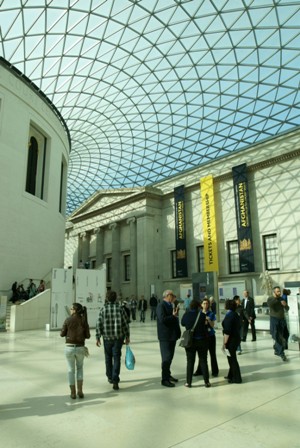
… and you’ll end up in a stunning courtyard, the Queen Elizabeth II Great Court, which is covered by a glass ceiling that consists of 1,656 uniquely shaped panes of triangular glass. The Great Court opened in 2000. It is the largest covered square in Europe.
In the center of the Great Court is the round Reading Room. Up until 1997, it served as the main reading room of the British Library (in ’97, the British Library opened a new building in the St. Pancras area). The Reading Room is open to anyone who would like a quiet, and beautiful, place to read.
With little time to explore, I decided I would hit a few highlights, then try to make it back to the museum on some other day, before I left London. I headed to the west side, where treasures from ancient Egypt, Greece, and Rome are stored.
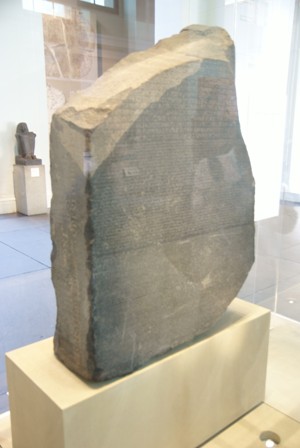
The moment you enter the west wing, one of the British Museum’s most prized exhibits is on display. The Rosetta Stone dates back to 196 BC, and is inscribed with a decree passed by a council of priests.
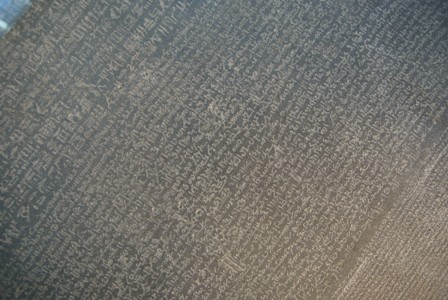
It’s especially important in the history of the world, because that inscription is written in three languages: hieroglyphic, demotic, and Greek. For 1,400 years, no one knew how to read hieroglyphs, until the early 19th century, when Jean François Champollion began to translate them, using the other languages on the stone.
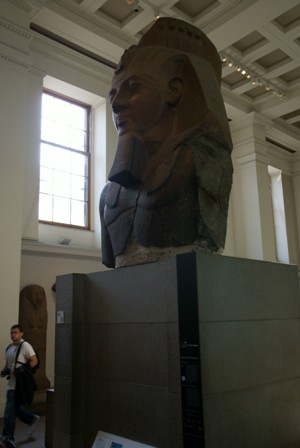
Head north through the Egypt exhibition, and you’ll be passing by so many incredible artifacts, your head will spin. One of the most noticeable is this statue of Ramesses II. He ascended to the throne in Egypt when he was 25 (in 1279 BC), and reigned for 67 years.
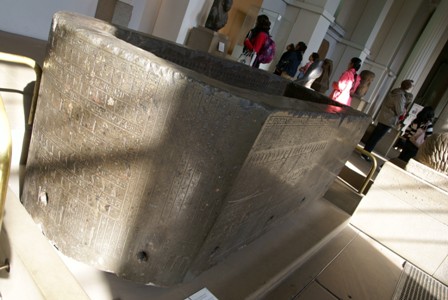
Another exhibit that captured my attention was this sarcophagus, prepared for (but never used by) Nectanebo II, around 345 BC. Nectanebo II never ended up inside it, because he fled the country during an invasion by the Persians. Later, his intended final resting place served as a ceremonial bath.
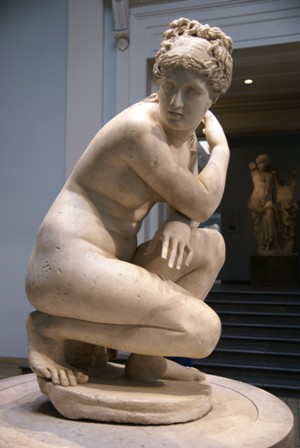
As I headed further west, two rooms away, I stopped to admire Lely’s Venus, a sculpture that dates back to the 1st or 2nd century AD. It’s a Roman copy of a Greek original, and depicts the goddess Venus startled while bathing.
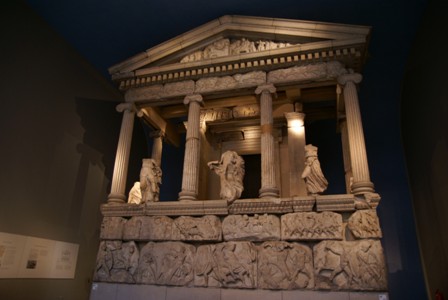
One more room over, and the Nereid Mounument is on display. This tomb comes from southwest Turkey, in the area known as Xanthos. The sculpted figures depict the daughters of the sea-god Nereus. It is the first known example of a temple tomb, and dates back to around 390-380 BC.
The Elgin Marbles
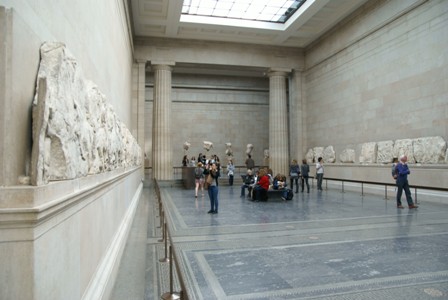
The final chamber of the western wing of the British Museum houses one of its most remarkable collections – the Elgin Marbles. The walls are lined with sculpted panels from the Frieze on the Parthenon on the Acropolis at Athens. The Frieze encircled the outside walls of the Parthenon, just below the ceiling of the Colonnade.
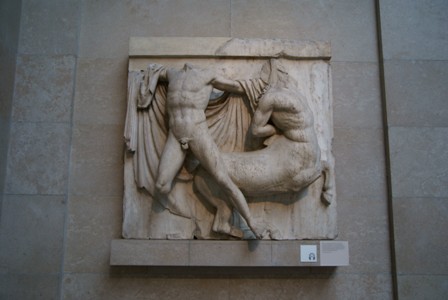
In addition to the Frieze sculptures (which were carved in low relief), several Metopes are on display. Metopes are rectangular slabs carved in high relief, with incredible detail. This Metope is part of a series that depicts a battle between Lapiths (a people in Greek mythology) and Cenaturs (half-man, half-horse creatures). As the story goes, the Lapiths and Centaurs were at a wedding, when too much alcohol brought out the wild side in the half-beasts. The Centaurs started raping women and children, and an epic battle ensued. This particular Metope illustrates a Centaur holding a wound in his back, while a Lapith restrains him, as he prepares to deliver a final blow.
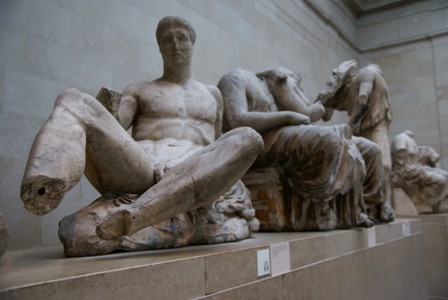
These sculptures came from the East Pediment — the triangular-shaped area above the Metopes. The experts believe that the man in the foreground is Dionysos, the god of wine. His right hand, now missing, may have held a cup.
That’s all I had time to see, during my visit to the British Museum. Of course, to properly appreciate all of the items on display, you would need days or weeks. I had just an hour or two.

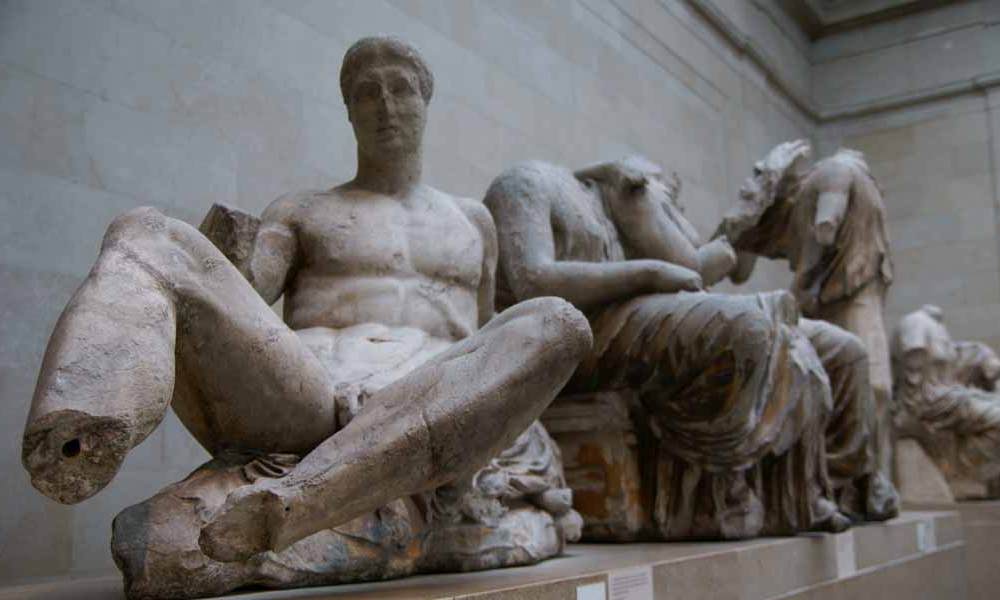
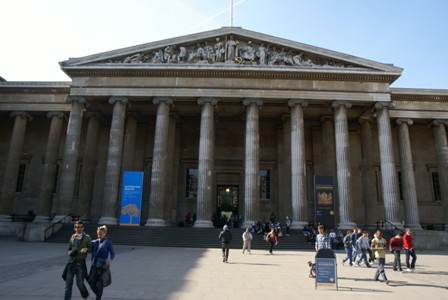

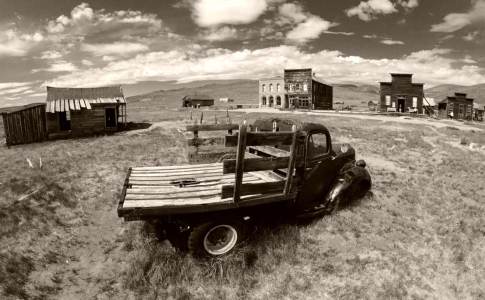

No comments